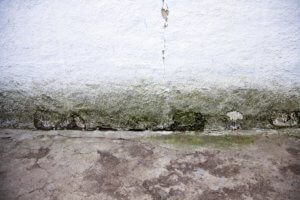Structural damp is the presence of unwanted moisture in a physical structure. This phenomenon has been wreaking havoc on buildings for centuries.
It has many causes, but typically it is the result of multiple symptoms. It can be caused by intrusion from the outside, or condensation from the inside.
Structural damp degrades the integrity of a building but may also lead to adverse health effects for occupants. The symptoms of structural damp are exacerbated by ambient climates.
There are different types of structural damp, such as, penetrating damp and rising damp.
There are many warning signs that can signal the existence of structural damp. On the interior of the structure, paint and plaster may deteriorate, wallpaper loosens, and stains can appear due to the salts in the invading water.
On the exterior, rust may appear as mortar crumbles. Lumbar can be destroyed by wet, or dry, rot. These symptoms of structural damp have devastating consequences if not identified in a timely manner.
The symptoms of structural damp can lead to detrimental health affects to inhabitants. The damp climate leads to the growth of moss, black mold, and other bacterial agents.
Once these organisms’ spore, they become airborne. If tenant’s breath these organisms in for an extended period respiratory issues can develop, such as asthma.
Occupants can develop Sick Building Syndrome (SBS). SBS is defined as adverse health effects an individual experience while living in a certain structure, but the symptoms disappear once they move from the building.
The most common cause of structural damp is poor building design and construction. Structural damp has been documented as far back as ancient Rome and Greece.
More commonly, it was documented during Victorian times in the United Kingdom during the late 1800’s. Poor insulation and an inadequate barrier from ground water were discovered to be the primary culprits. Poor ventilation is also known to contribute to structural damp.
Damp Proof Course (DPC) was the answer to deter the penetrating ground water. Most commonly, this is a physical barrier, with a low porosity, between the ground and the structure.
Rising damp is the result of ground water seeping through a foundation by capillary penetration. When a material with too high a porosity is set above the ground, over time the water will be soaked up like a sponge.
This is the most common, and devastating, form of structural damp. The only way to address this damage is to improve the DPC. There are many costly techniques to accomplish this.
Areas with ambient climates are more susceptible to structural damp. Constant rain, floods, and high humidity all increase the potential for structure damp. Internal condensation can also lead to damp. Bathing, cooking, laundry, indoor plants, even breathing, create condensation and raise the humidity of an internal environment. Proper ventilation and insulation combat this.
It is important to do routine checks for structural damp, especially in ambient areas. The symptoms of structural damp can be seen early on by the trained eye. If structural damp goes untreated the damage can be devastating.


